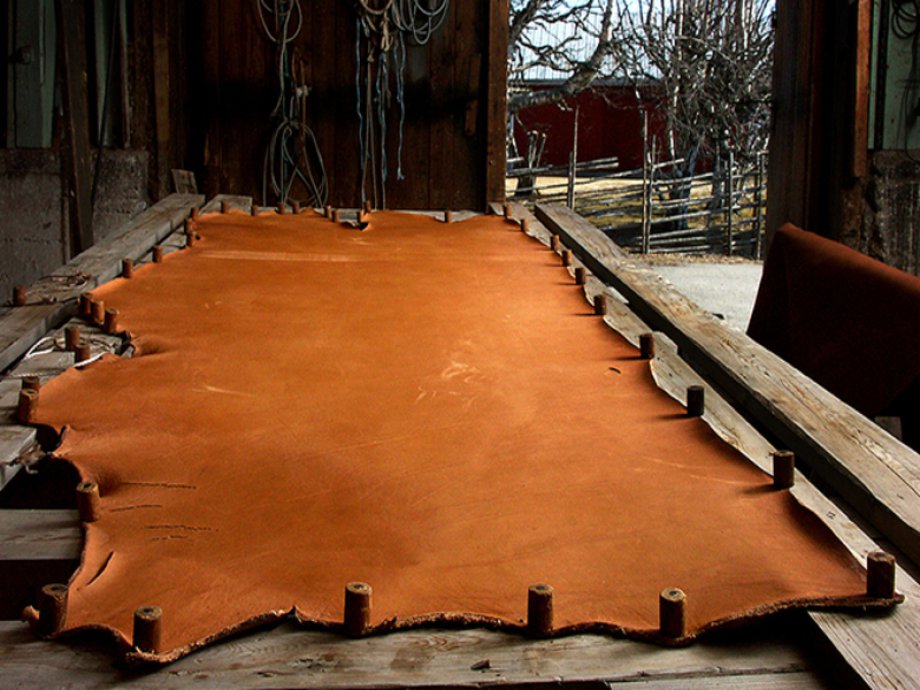What is Bovine Leather?
What is bovine leather?
Bovine leather is a term used to describe the sub-category of the materials produced from a bovine coat's tanning process. Bovine animals ('Bovinae' in Latin) are a subfamily of bovine animals ('Bovidae') which comprise many breeds of animals, such cows, buffaloes, bulls and calves, which are extensively used and valued in the leather goods industry.
Bovines are very common animals in the world because, both in financial perspective and in conditions of livelihood, they are of considerable importance to humans. Without a question, the key reasons that these animals are raised are their meat and milk, while their skin is considered a secondary commodity and a recovery product. What about the skin, before it can be used in widely used items in which we all know, it has to follow a chemical and physical transformation process. This practice is called "tanning" and may take place in various ways, but what concerns us is that it has the primary purpose of rendering the dermis of animals rot-proof and thus not subject to modifications due to time or use.
The most famous bovine breeds are:
- Cows
- Bulls
- Buffaloes
- Calves
- Bison
And their hide, once tanned, is used in numerous productions, of which we find the major ones:
- Furniture, upholstery, automotive
- Belts, saddlery, bridles
- Clothing
- Leather goods and bags
- Footwear
Eventually, we can make the following definitions as far as the major forms of bovine leather are concerned:
Full grain bovine Leather vs Corrected grain bovine leather
Top grain bovine leather vs Bovine split Leather
Finished bovine leather vs Crust bovine leather
- Full grain bovine leather: bovine leather with a finish that does not cover (i.e. aniline)
- Corrected grain bovine leather: it is a bovine leather with covered finish (i.e. pigmented)
- Top grain: the upper layer of the animal's skin surface
- Bovine splited leather: it is the portion of the skin surface that is lower and cheaper, often called the flesh side.
- Finished bovine leather: it is a bovine leather that is finished with some form of operation on its surface
- Crust bovine leather: it means a bovine leather with a natural surface and only tanned without processes of finishing.
Consequently, we can assume that we mean a handled leather of the bovine species by bovine leather and that it can have the most diverse types and physical features depending on the use that must be made of it and the manufacturing process put in place.
Bovine leather market and Turkish production
Since ancient times, leather has definitely embodied an aspect of excellence, not to mention luxury. The leather collected from mammals is the most prestigious: bovine cattle, goats, dogs, lambs, buffaloes, donkeys, ponies, etc. The age, origin and weight of the animal are all important considerations in terms of the consistency of the leather to be obtained from them. In the exchange in raw hides, weight is also the measuring unit. Europe is the largest manufacturer of leather in the world, not only in terms of production levels, but also in terms of consistency. Turkey is the global leader in the tanning industry , despite the foreign players being very determined. Development of footwear and leather goods (such as bags and wallets) alone accounts for half of the global market, then we find the industry of other general leather goods with a 20% market share and finally leather goods with a 20% market share for upholstery, automobile and furniture. The remaining part reflects the leather and accessories used in the clothing sector.
Calfskin leather: specifications
Calf leather is a kind of hide for bovine leather that calls for a classification that has its own: when making medium-small quality goods, they are the most valued and preferred. They are filled with a surprising fullness in contrast to their width and weight: their fibers are very small but produce a very solid material. The skin that comes from them is soft, flexible, foldable and one of the finest is the grain hand. Their usage is reserved for the development that is most desirable.
Main usage of bovine calf leather
In the manufacture of belts, wallets, coats, boots and clothing, calf leather is commonly used. Calf leather proved to be very sturdy, capable of surviving abrasions. For this purpose, it is used in the manufacture of gloves and jackets intended for heavy use, while when used for the manufacture of shoes, it produces a soft product which, even when used on a daily basis, retains its characteristics unchanged over time. Ultimately, the most popular luxury brands also prefer calfskin for their pricey production of leather goods.






